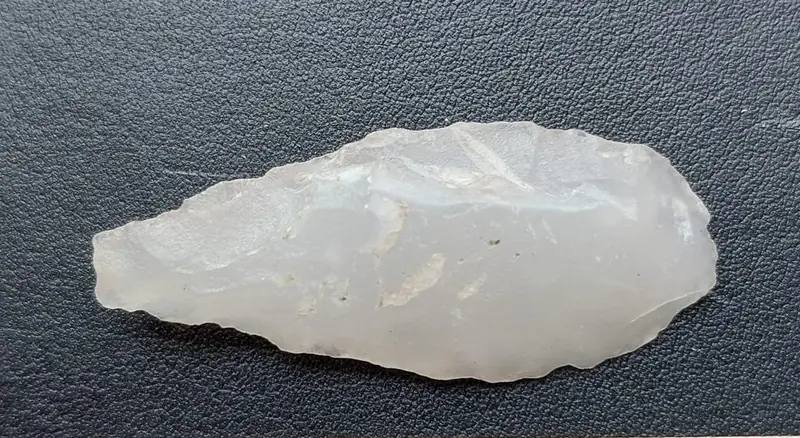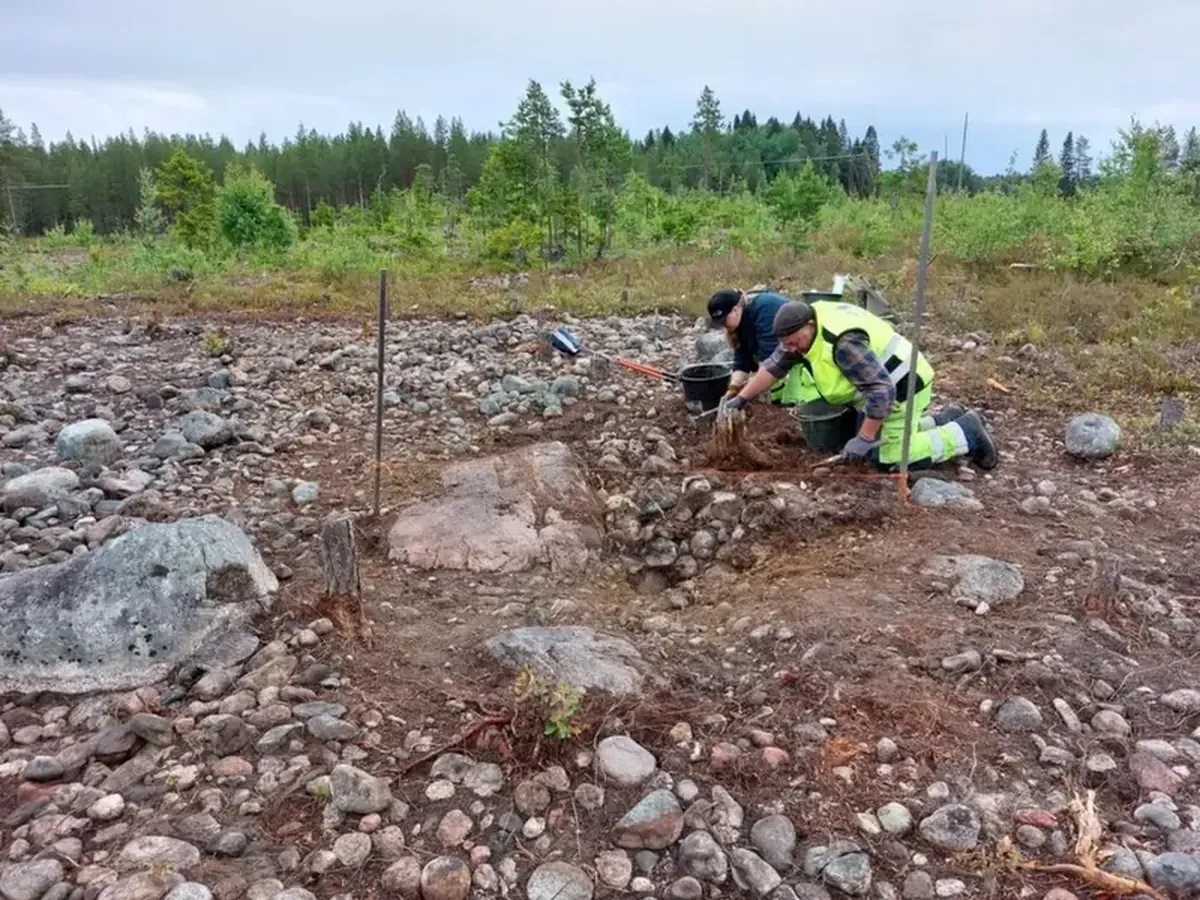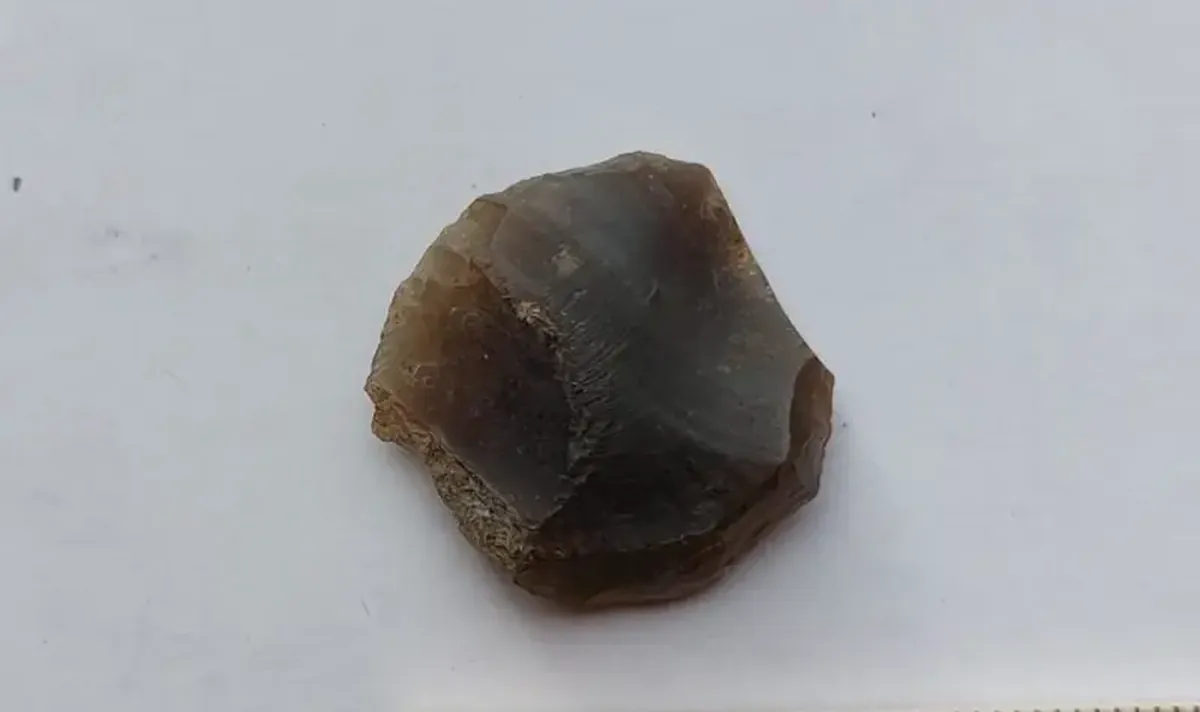
During excavations conducted collaboratively by the Swedish Archaeological Service, the Västerbotten Museum, and the Skellefteå Museum, researchers uncovered a rare artifact on the Hedkammen ridge. This find showcases the exceptional craftsmanship of an ancient artisan, as well as advanced material processing technologies and long-distance transportation methods that existed 2,500 years ago.
The arrowhead, carved from white quartzite—a material rarely used for tools of this type in the region—features a symmetrical shape and perfectly sharp edges on both sides, suggesting it was made for a person of high status or was ceremonial in nature. Given the precision in the quartzite’s processing, this discovery highlights the high level of craftsmanship characteristic of prehistoric communities in Northern Scandinavia during the late Bronze Age or early Iron Age.
“This is a prime example of prehistoric craftsmanship,” said Ulofs Estlund from the Skellefteå Museum, who documented the artifacts found during the excavation.
What Else Did the Researchers Discover?
Overall, the excavation team uncovered over 300 different objects across 16,000 square meters of two main sites on either side of the Hedkammen ridge.
Among these were hearths, cooking pits, clusters of stones with fire cracks, burned red sand, and rows of stones that likely remained from ancient docks for boats or storage facilities.
Many of these objects are located near natural harbors that were probably used around 500 B.C. This supports the idea that Hedkammen was a hub of coastal activity during those ancient times, as reported by Arkeonews.

Evidence of Human Presence
Archaeologists found signs of continuous human presence at the excavation site, dating back to around 500 B.C. and extending into the late Middle Ages.
In addition to the arrowhead, the team also discovered charred bones, expertly crafted pottery, stone tools, rare flint scrapers, and flakes of quartz, quartzite, flint, and slate.

One flint flake had a polished surface, leading scientists to suggest it was part of a repurposed axe, possibly imported from Denmark. This indicates the existence of trade routes between the southern and northern regions of Scandinavia during prehistoric times.
The excavation area contains four stone burial mounds, two of which were excavated in the 1990s. Excavations of the other two have recently begun. Researchers hope these will shed light on the prehistoric burial practices of this region.
